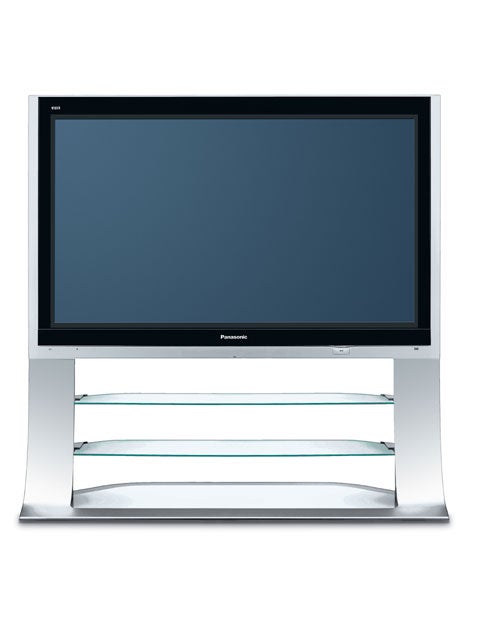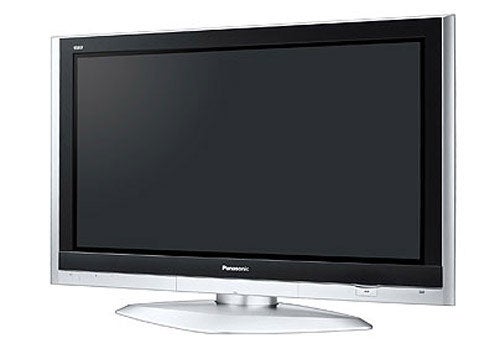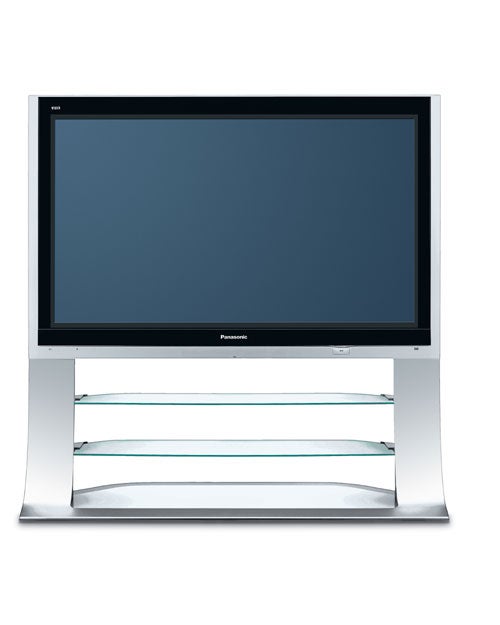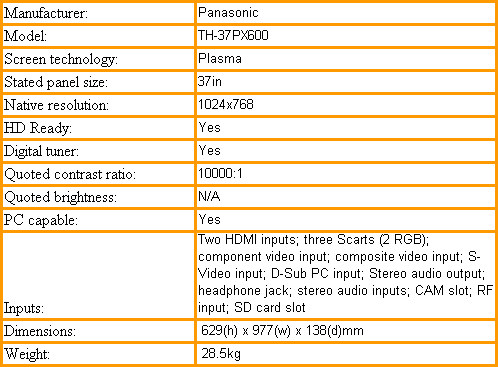Panasonic Viera TH-37PX600 37in Plasma TV Review
Panasonic Viera TH-37PX600 37in Plasma TV
Panasonic proves once more that Plasma is far from dead.

Verdict
Key Specifications
- Review Price: £1423.00
You’ve got to admire a company that sticks by its principals even when everyone else is doing their damndest to make those principals look wrong. Provided, of course, that ‘everyone else’ isn’t actually right…
Cue the TH-37PX600, with which Panasonic hopes to prove that its unique decision to stick with plasma rather than LCD technology at the 37in screen size is born of a desire to give consumers the best picture quality rather than a stubborn refusal to change with the times.
The TH-37PX600 belongs to Panasonic’s latest ‘flagship’ Viera range – but you wouldn’t guess this from looking at it. Its predominantly grey bezel looks bland and feels plasticky compared with most flat TV rivals. Things do perk up a bit, though, if you pop the telly on Panasonic’s glamorous cabinet stand mounting option.

Connectivity is impressive. Starting the good news off are two HDMIs, but these receive ample backing from component video ports for connecting analogue HD devices like the Xbox 360, a D-Sub PC jack, three Scarts, and a front-mounted SD card slot.
This SD slot is one of the things that distinguishes the PX600 from TVs lower down the Panasonic pecking order. And it isn’t just for playing JPEG stills, either. It can also play AND record MPEG 4 movies, meaning you can watch TV recordings made by the TV on a portable video device on your way to work every morning. Bonus. Provided, of course, your portable video device happens to take SD cards.
This Panny’s HDMI sockets are more interesting than most, too, in that they’re configured to deliver enhanced, two-way communication with other compatible Panasonic kit like the company’s new DIGA digital recording range. It’s a shame this HDMI system doesn’t work with gear from other manufacturers – but then if it did, there wouldn’t be any incentive for you to make your entire home AV system Panasonic branded, would there?!
In keeping with every Panasonic TV these days, the 37PX600 carries a built-in digital tuner, complete with conditional access module slot for adding subscription channels, and a well-implemented 7-day electronic programme guide.
Perhaps the TV’s most significant feature, though, is its V-Real image processing. This apparently delivers a number of significant improvements over anything Panasonic’s done before, with key talents including processing of both 720p and 1080i sources in their native forms, a Digital Remastering circuit to add fine detail to standard definition pictures, sub-pixel control whereby the TV processes the red, green and blue elements of each pixel individually for greater precision, and a Gamma Control system driven by new 11.5-bit picture processing that apparently helps the TV achieve a claimed total of 29 billion colours. Strewth. We’re just glad we weren’t the Panasonic lab monkey who had to count them all…

The TV also sports contrast management to ensure the set’s black levels and brightness are always optimised to suit the image content, and a new noise reduction system which supposedly spots potential troublesome areas and stamps out noise before it can even appear onscreen (rather than only reacting to it after it has appeared).
Then there’s the latest version of Panny’s justly famed Real Black Drive technology for improving the TV’s black levels by making them deeper (Panny quotes a contrast ratio figure of 10,000:1), and less troubled by grey dot crawl than most plasmas. Real Black Drive is supported on the latest Vieras by a new ‘Deep Black Filter’ too, which soaks up onscreen reflections.
Our last duty on the features front is to cover two more points where the 37PX600 differs from the PX60 range. First, the PX600 benefits from a more potent speaker system, which uses separate woofers and tweeters for greater clarity, and ups the power handling to 31W from the PX60’s 20W. Second, the PX600 carries a full picture in picture system.
Since they both use all the same core picture technology, it would be very surprising if the 37PX600’s pictures differed substantially from those of the previously reviewed 42PX60. And indeed, the 37PX600’s pictures turn out to be every bit as sublime as those of its bigger sibling.
As always seems to be the case with Panny plasmas, if there’s one picture element that stands out above of all the rest, it’s black level response. We’ve never seen any other flat TV brand deliver blacks with the same killer combination of total darkness and subtle shadow detailing. This means that while playing, say, Prey on the Xbox 360, the game’s darkest corners look pitch black rather than a murky grey as they do on most flat TVs – yet you can still comfortably make out the sort of subtle shading and background details in dark areas that make the image more three-dimensional, believable and involving.
It’s a treat, too, to spot practically none of the grey dot crawl noise still often seen in black areas on plasmas. Talking of typical plasma troubles, there’s also seldom a trace of the technology’s fizzing over horizontal motion.

Another area in which the 37PX600 absolutely excels – and teaches LCD rivals a harsh lesson – is colours. We’ve seen more vibrant hues from some LCD TVs perhaps, but if like us you value natural tones and subtle shading over naked aggression, the 37PX600’s colour palette’s deft touch and extreme range is simply a joy to behold.
Another plus of the 37PX600 is its flexibility. Its V-Real processing and plasma technology together take the trip down from high to standard definition surprisingly in their stride, avoiding the colour tone, softness and noise issues that plague so many LCD TVs’ standard def performances.
The plus points described above ensure that the 37PX600 is never less than a complete joy to watch. Perfection seekers that we are, though, we do have a couple of itsy bitsy complaints. First, HD pictures don’t look quite so pin-sharp as those of the star LCDs out there. And second, colour blends can occasionally look stripy. Still, these are prices we’re definitely prepared to pay in return for all the good things the 37PX600 does.
The 37PX600’s new speaker design helps the set deliver an audio performance that’s nearly as impressive as its visuals, with stonking amounts of power, frequency range, bass rumble, vocal authenticity and treble accuracy.
”’Verdict”’
Another effortlessly sublime TV from Panasonic – and one that proves without doubt that you write plasma off at your peril.

How we test televisions
We test every TV we review thoroughly over an extended period of time. We use industry standard tests to compare features properly. We’ll always tell you what we find. We never, ever, accept money to review a product.
Trusted Score
Score in detail
-
Value 8
-
Image Quality 9
-
Sound Quality 9

